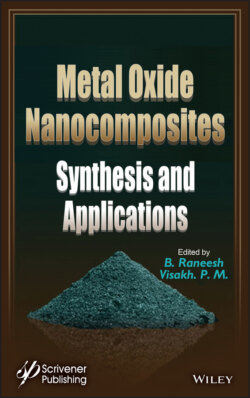Читать книгу Metal Oxide Nanocomposites - Группа авторов - Страница 14
1.2 Graphene-Based Metal and Metal Oxide Nanocomposites
ОглавлениеCarbon materials exist in all dimensionalities including zero-dimensional (0D) i.e. fullerenes, quantum dots, one-dimensional (1D) carbon nanotubes i.e. CNTs, two-dimensional (2D) i.e. graphene and three-dimensional (3D) i.e. graphite. Graphene is the appellation given to a two-dimensional sheet of sp2-hybridized carbon atoms with exceptionally high crystallinity and electronic property [17]. Lately, the nomenclature ‘‘graphene’’ was acclaimed by the commission of IUPAC as a substitute to the older name ‘‘graphite layers’’, for the reason that graphite is three-dimensionally (3D) stacked carbon structure. It has arose as a speedily growing wonder material in the field of material science due to its thinnest and the sturdiest structure [18]. In early 2004, it gained high significance after the studies presented by Geim’s group, who demonstrated the graphene sheets and stated their unparalleled electronic properties. Later, in 2010, Physics Nobel Prize for pioneering research highlighting the two-dimensional material graphene presented by the Royal Swedish Academy to pioneers namely, Andre Geim and Konstantin Novoselov [19]. The progress in research till date, on graphene is mainly focused on the chemical and physical route of synthesis of pristine graphene, its chemical modification, detailed characterization of its chemical and physical properties and functions, synthesis and characterization of graphene-based polymer composites and metal-oxide nanocomposites, aiming to exemplify the impression of graphene-based nanomaterials on the development of novel analytical developments and its applications. Despite the fact, Geim and coworkers also employed the use of mechanical exfoliation which led to many stimulating investigations on graphene and its electronic and mechanical properties [20]. Recently, a facile and green synthetic stratergy for the large scale production of graphene by means of ball-milling of graphite flakes with carbohydrates namely sucrose, Producing graphite through epitaxial growth under the effect of ultrahigh vacuum (UHV) annealing conditions of SiC surface has attracted many researchers and technologists for the semiconductor industry [21]. The practice of epitaxial growth of graphene layers on silicon carbide (SiC) substrates give an impression of being highly capable approach for the fabrication of electronic devices. Likewise, Berger and De Heer in the early days of graphene research provoked the usage of epitaxial graphene on SiC substrates [22].
Later, much research efforts have been dedicated to recognize the synthetic and mechanistic of graphene growth and detailed experiential studies to optimize the thickness of graphene layers. The merits of the Plasma enhanced chemical vapor deposition (PECVD) embraces the short deposition time around <5 min and a temperature of 650 °C for the growth of graphene layers (contrary to 1,000 °C for CVD) [23]. The aim of regulating pH with ammonia solution resulted in deprotonation of the carboxylic acid functionalities leading to the formation of well-dispersed graphene colloids [24]. Likewise, Athanasios and coworkers investigated the synthesis of reduced graphene oxide by engaging the use of sodium borohydride [25]. Apart from these, there are other chemical routes employing the use of hydroquinone [26] and strong alkaline stock solutions [27], thermal reduction and solvothermal methods have also been vastly studied. The thermal reduction of GO to form rGO, utilizes the thermal treatment (at high temperatures) to eradicate the oxide functional moieties from the surface of GO [28]. Sol–gel process is engaged for the synthesis of TiO2-GO/rGO composites by the chemical reaction of titanium isopropoxide and GO/rGO sheets which ensued the surface hydroxyl groups on GO/rGO that necessitate nucleation sites [29]. The ss-DNA/Graphene nanocomposite offers a novel bio-graphene hybrid electrochemical platform for the biological determination of redox enzymes [30]. The covalent functionalization in graphene is commonly headed by a chemical oxidation of the graphite with the effect of strong acids and oxidants to acquire oxygen-rich functional moieties that assist as pioneers for the chelation of organic molecules. As detailed synthesis of GO outcomes in extremely functionalized oxygen surface moieties, thereby reaching the C/O fraction of 2:1 [31].
